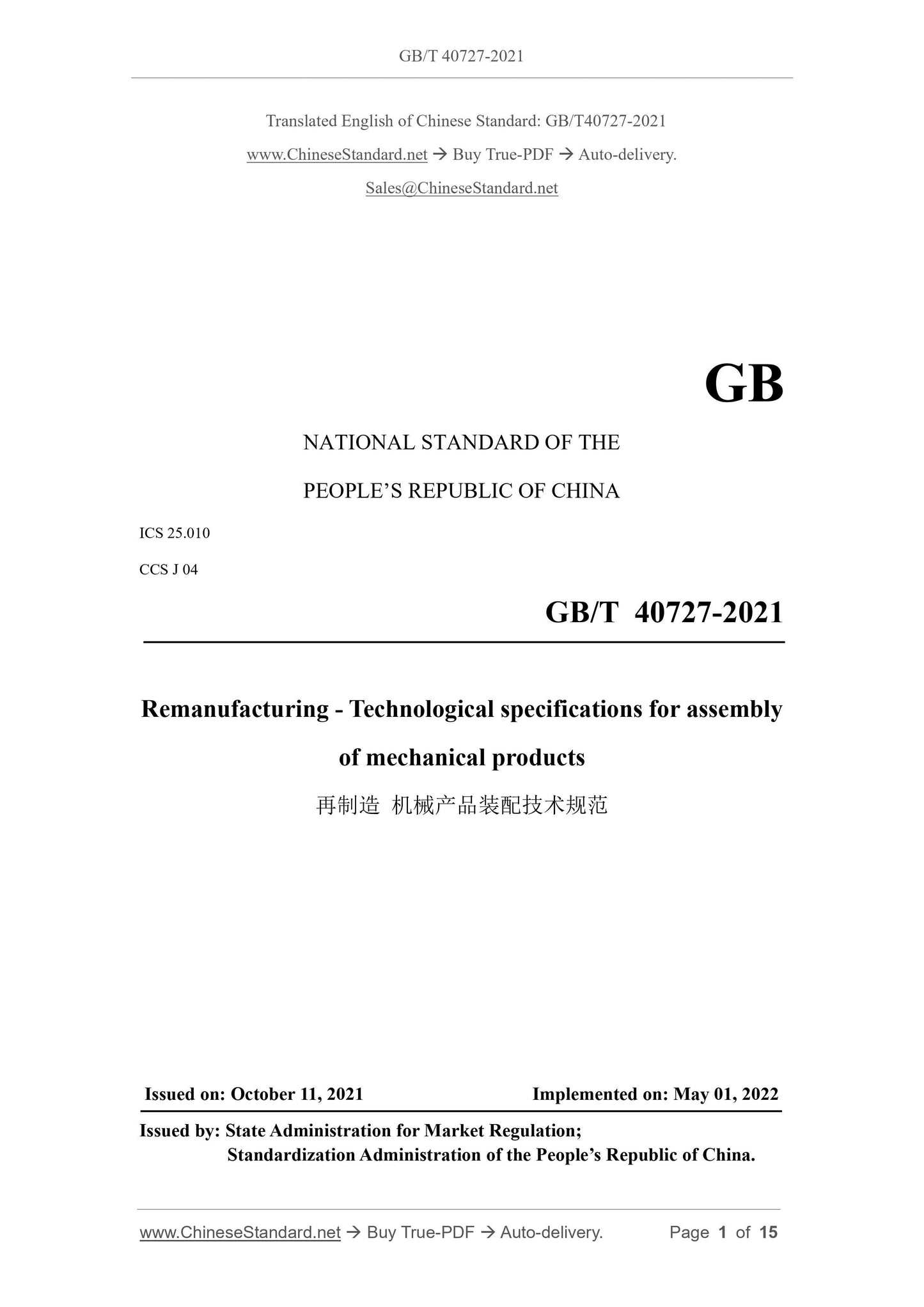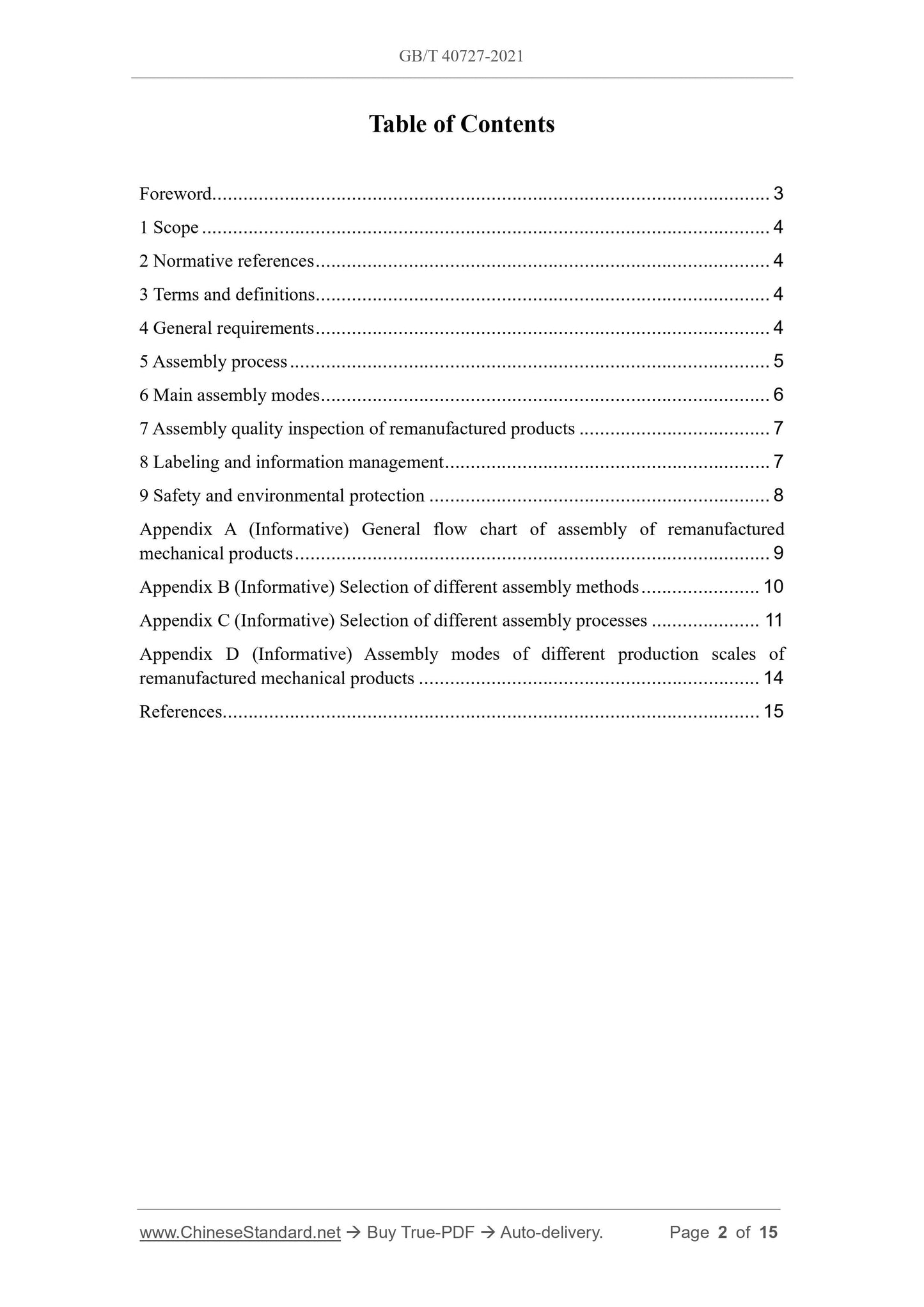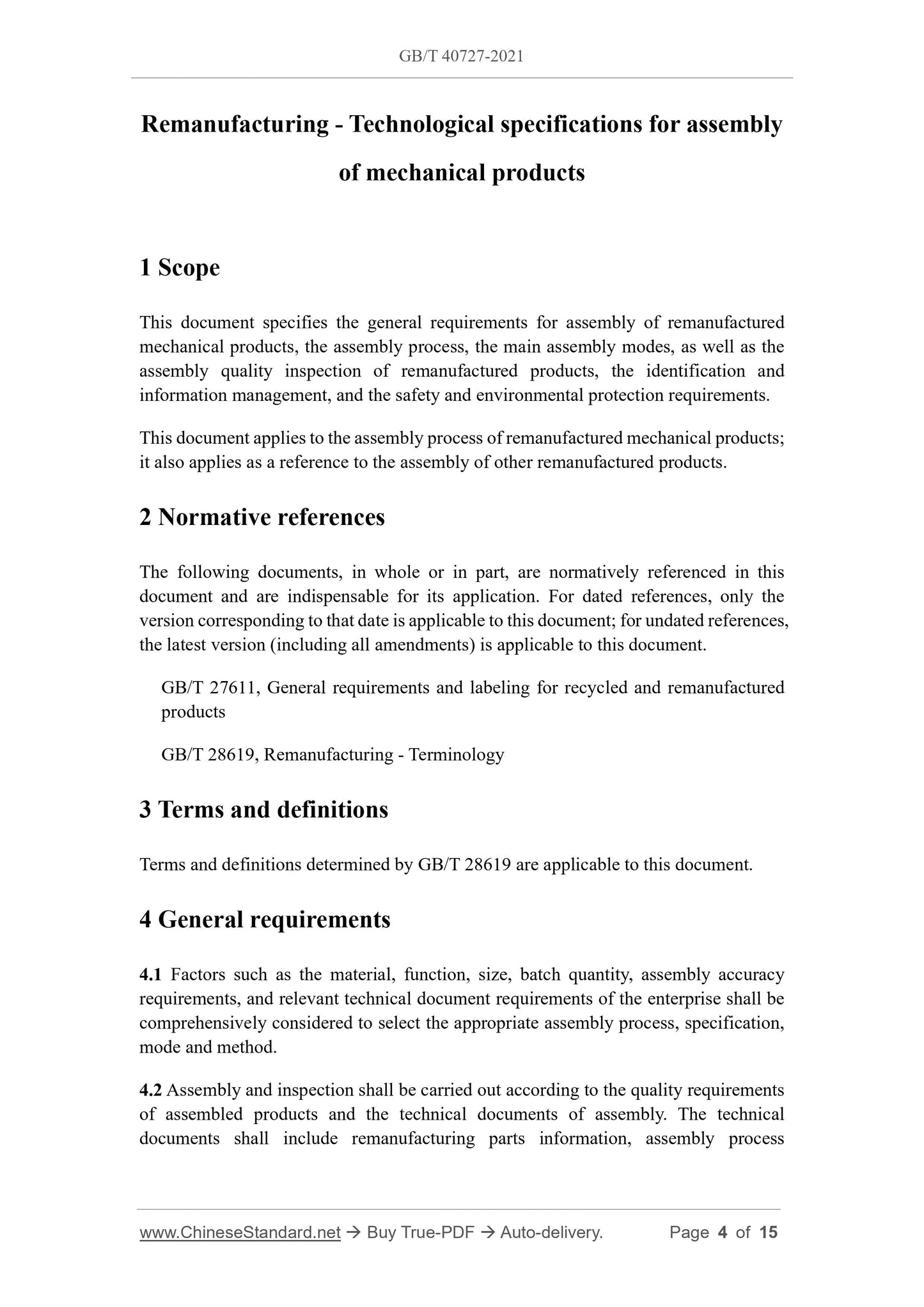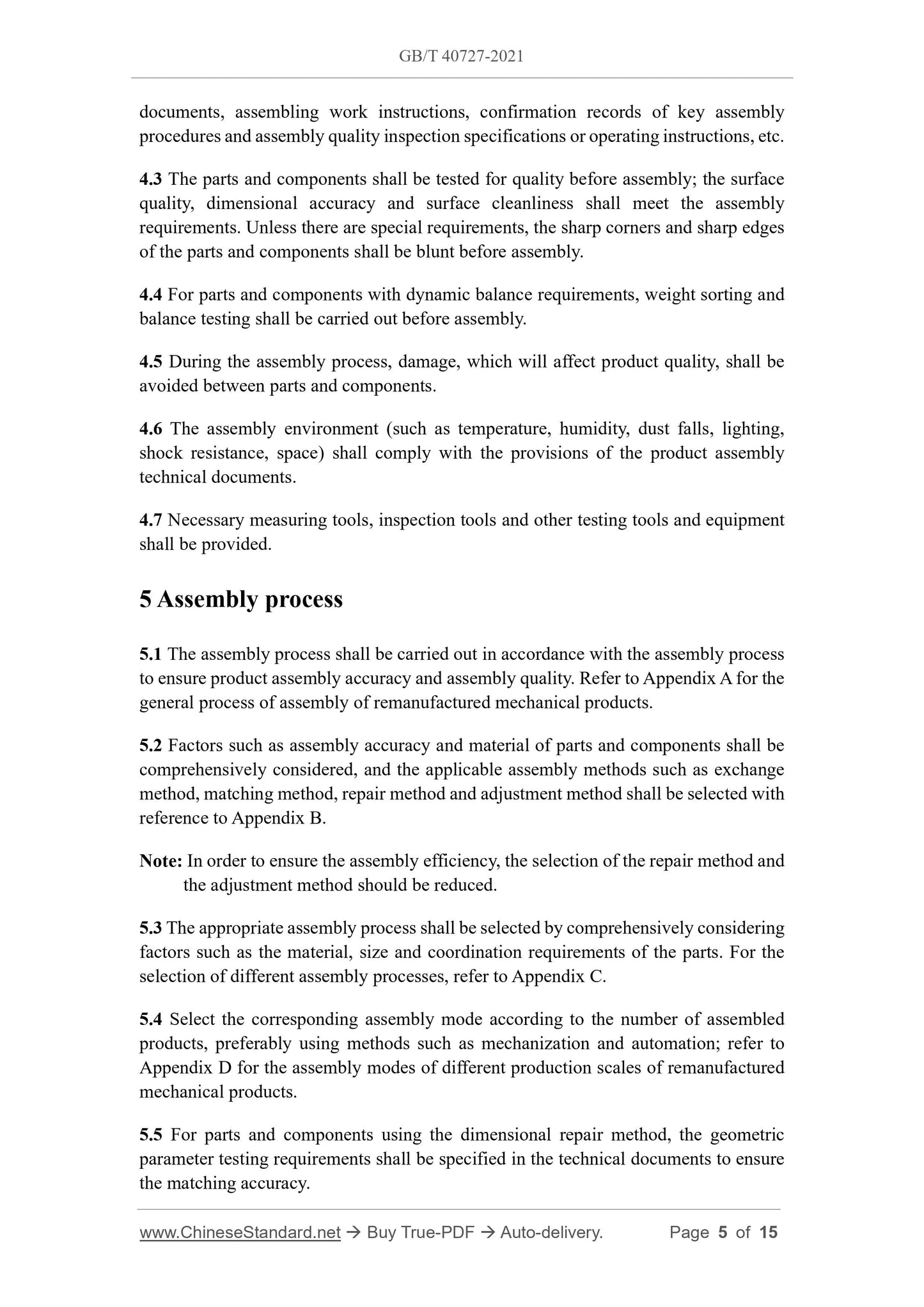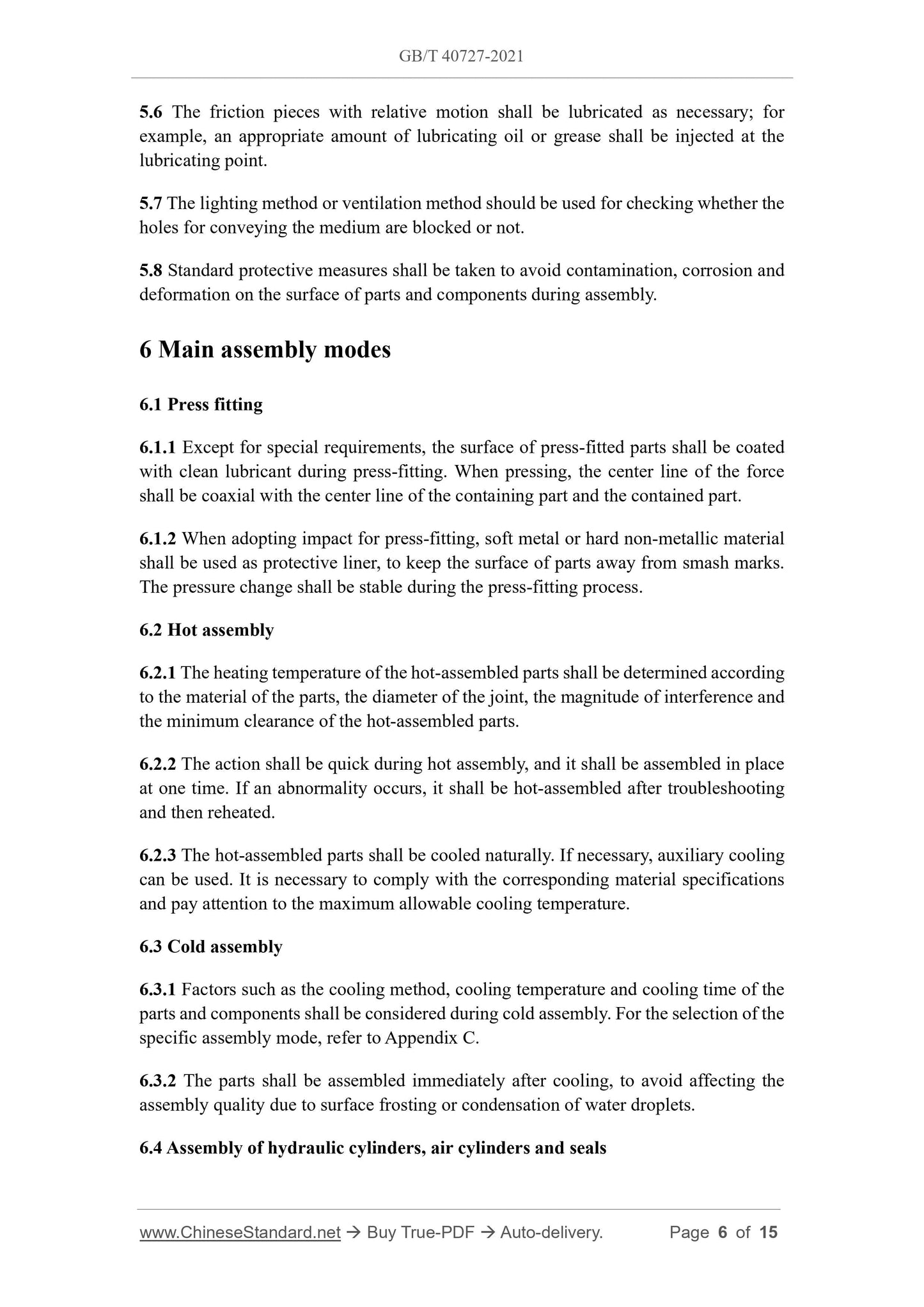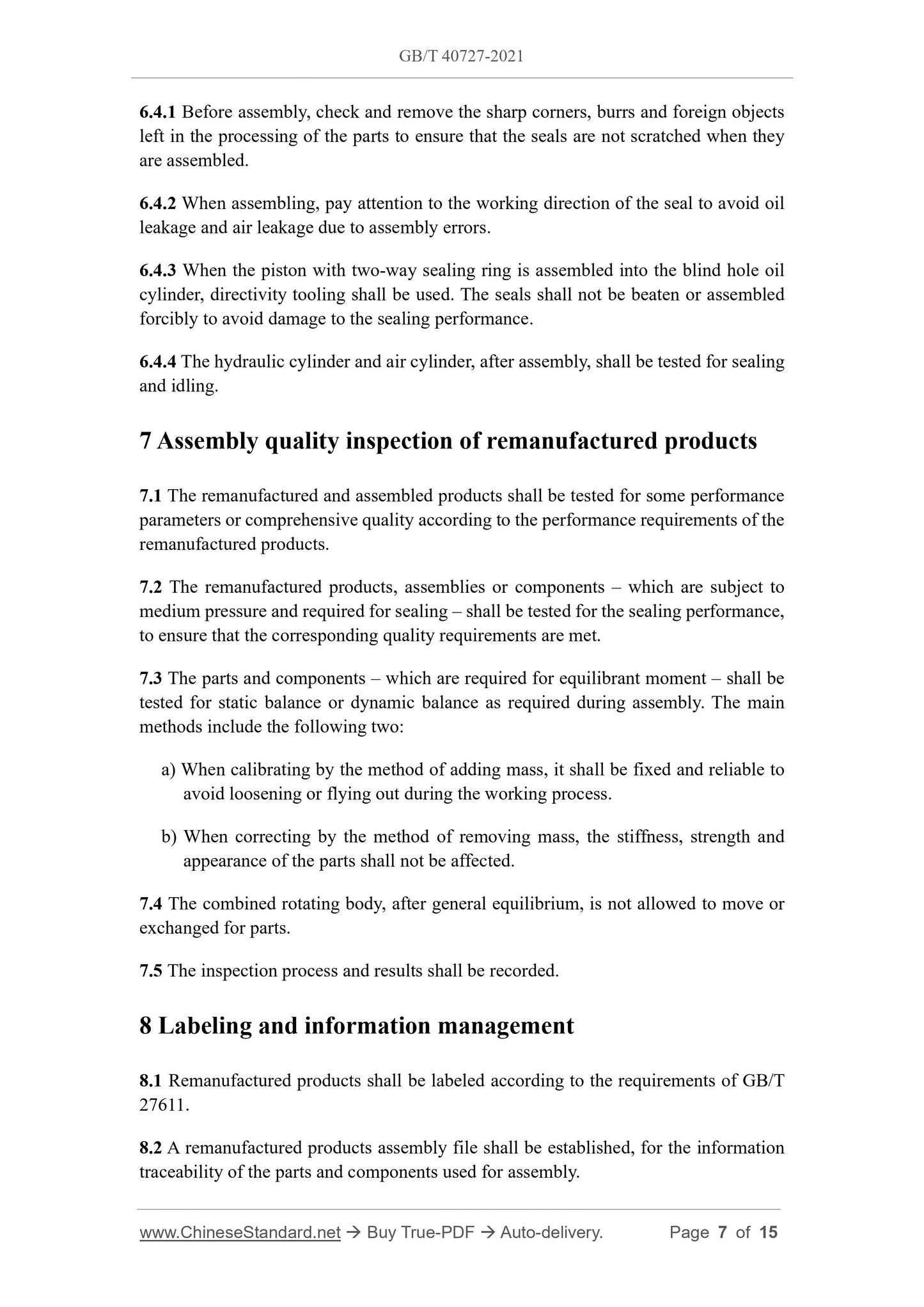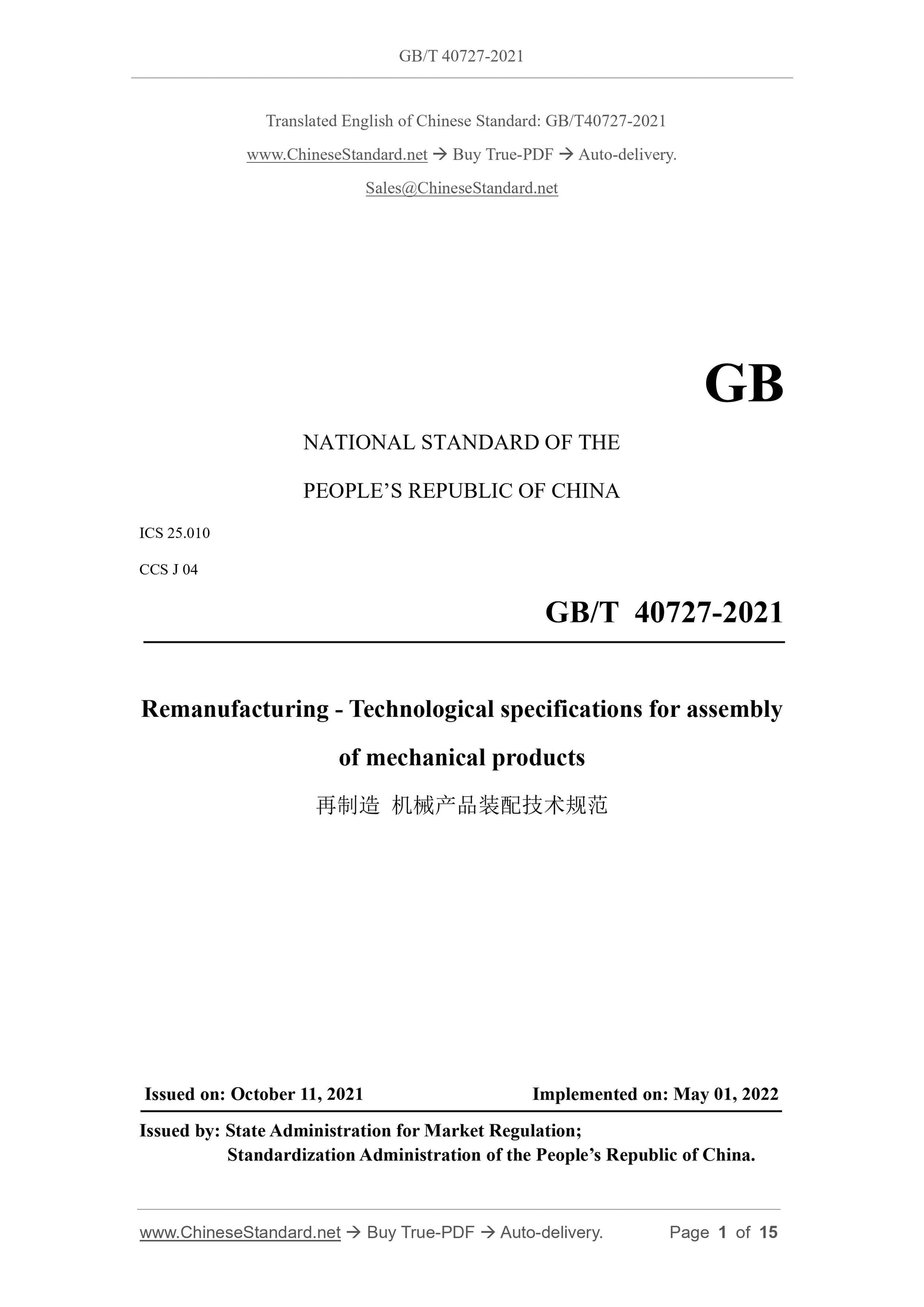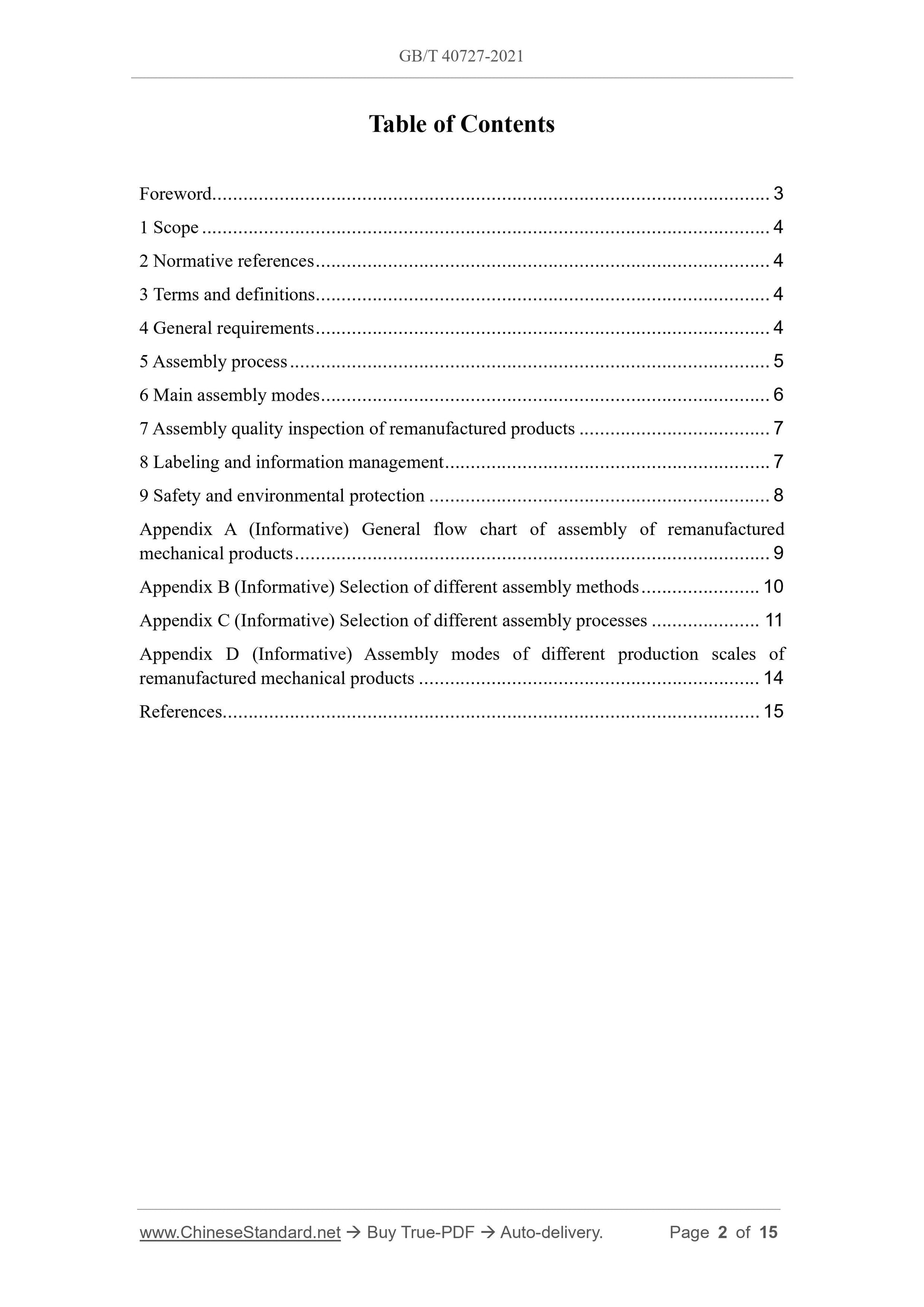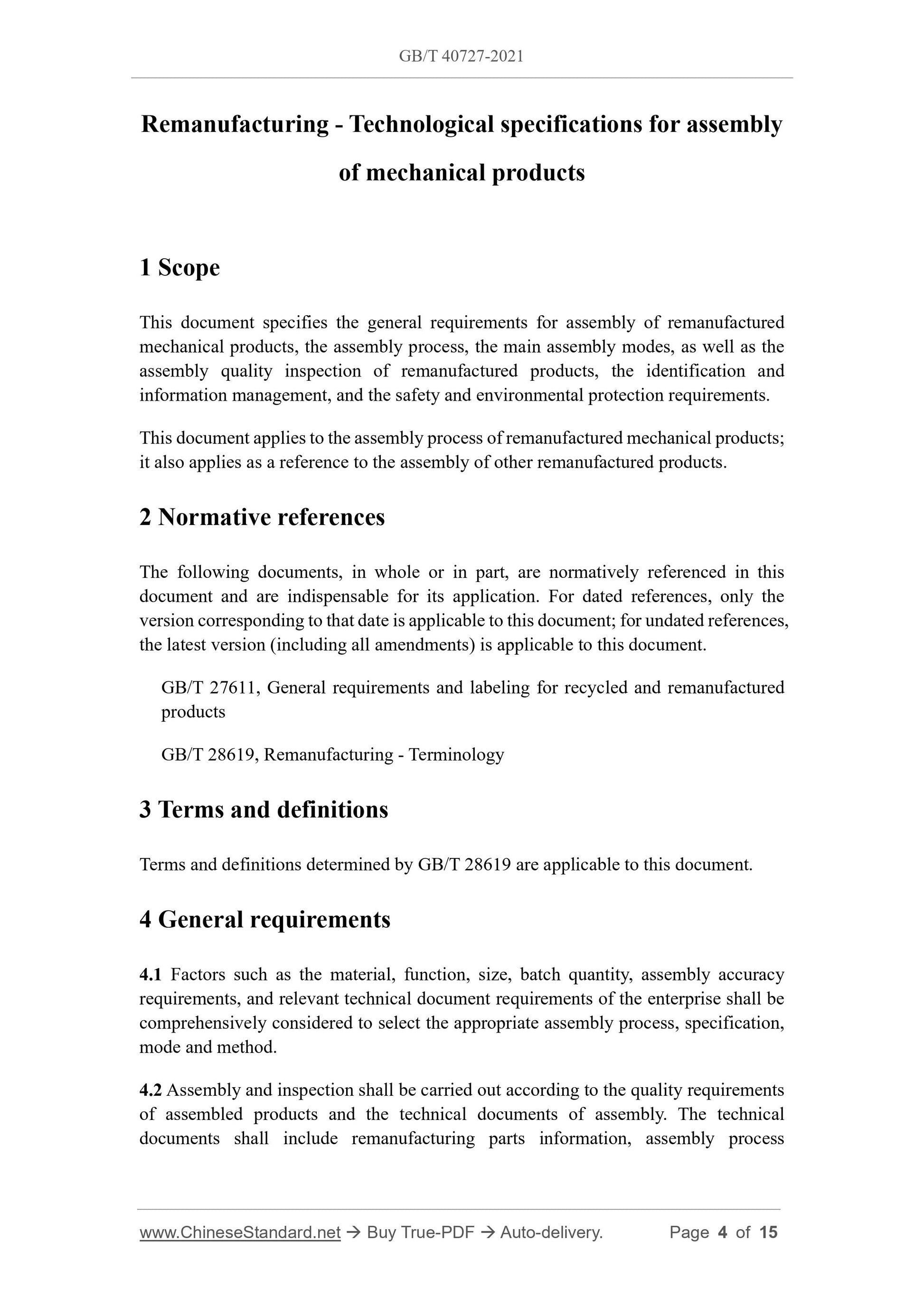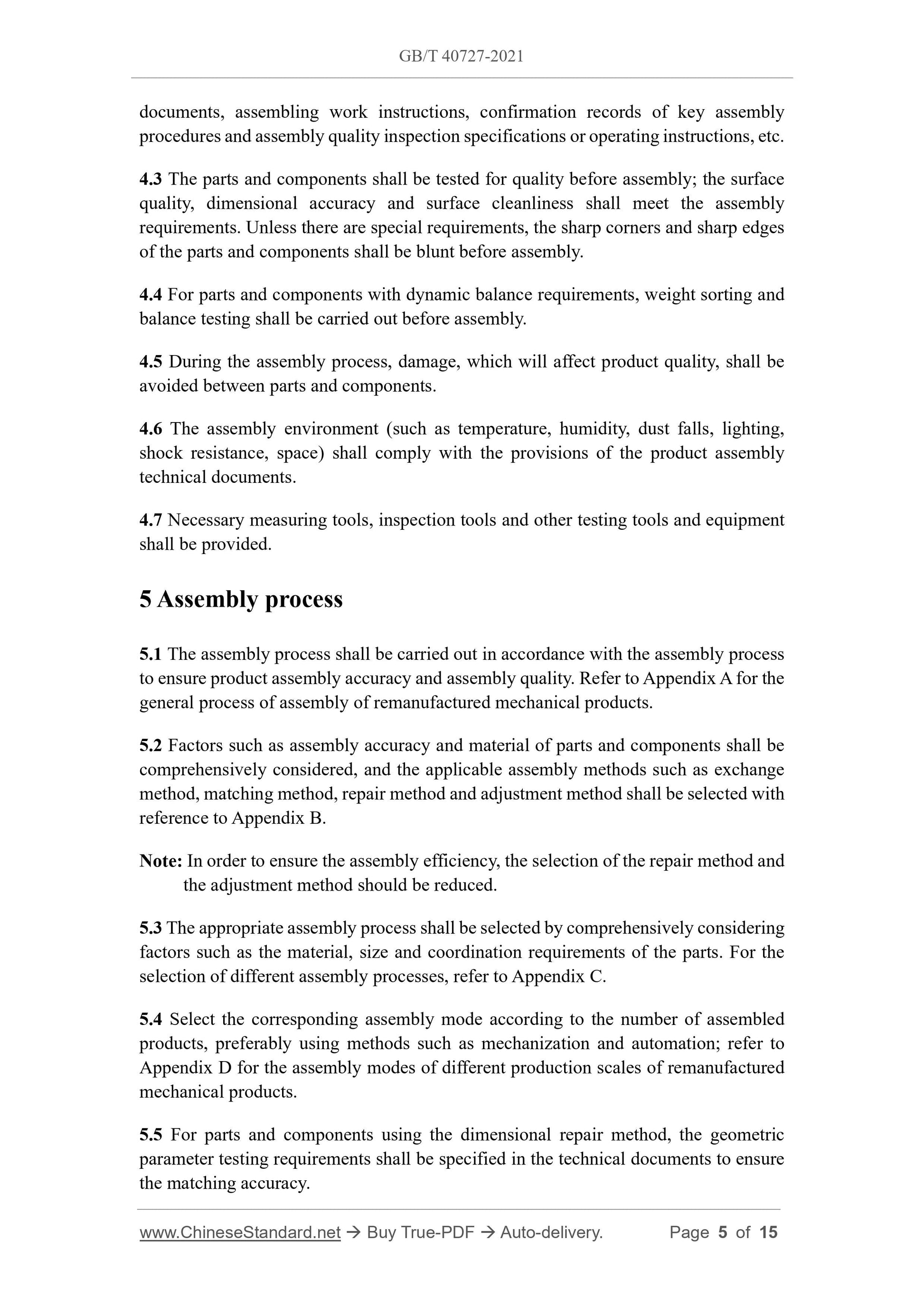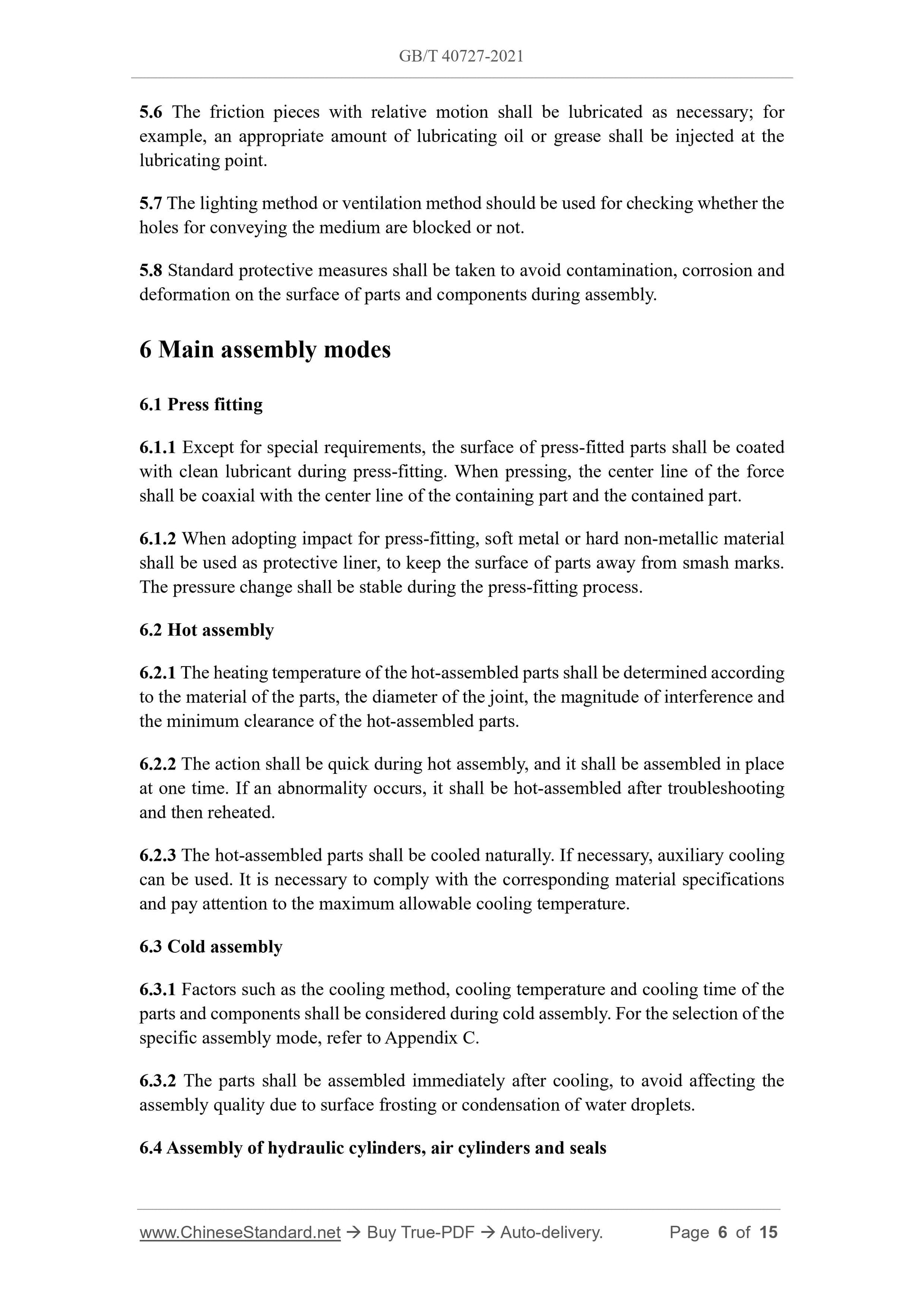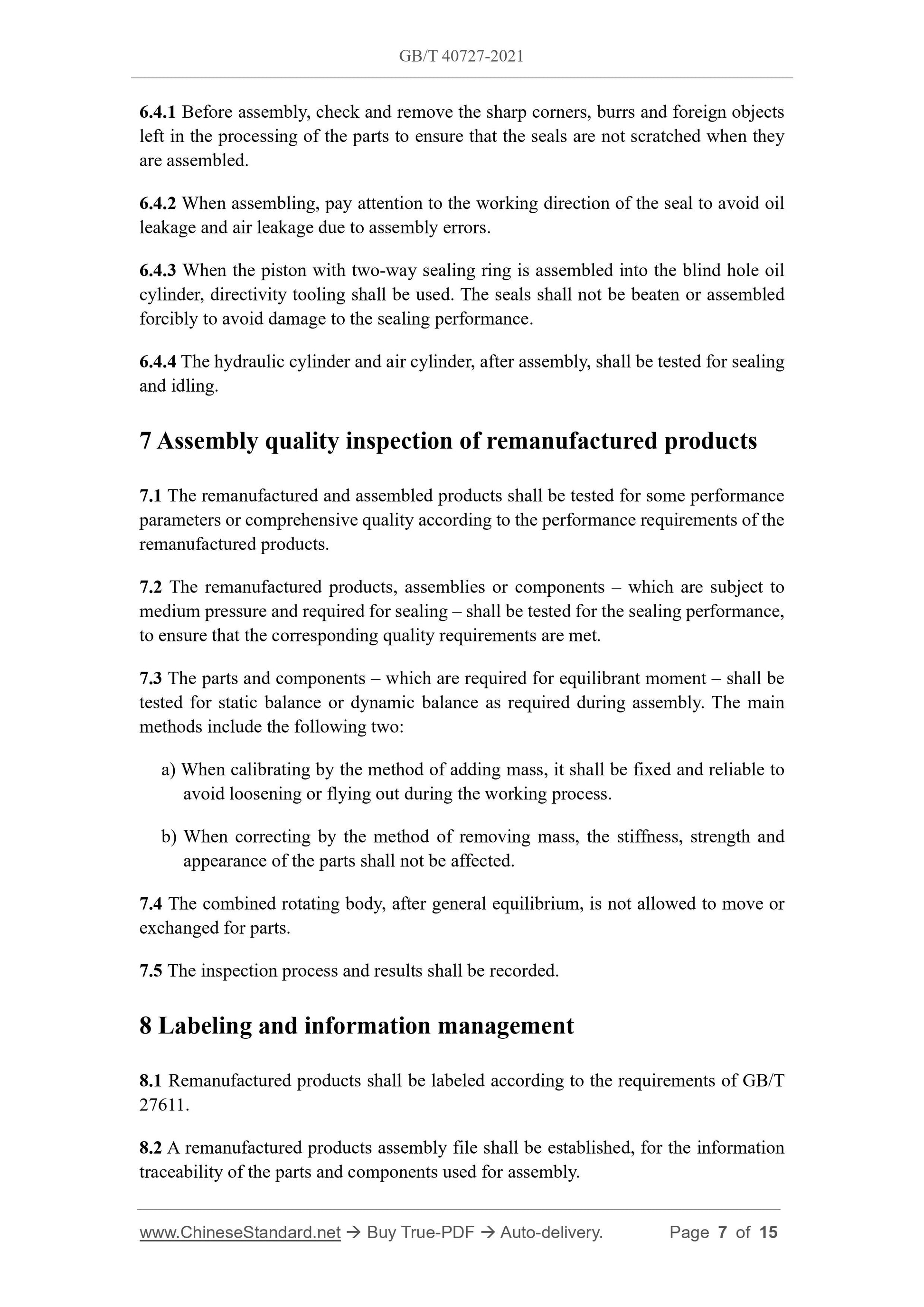1
/
of
6
www.ChineseStandard.us -- Field Test Asia Pte. Ltd.
GB/T 40727-2021 English PDF (GB/T40727-2021)
GB/T 40727-2021 English PDF (GB/T40727-2021)
Regular price
$205.00
Regular price
Sale price
$205.00
Unit price
/
per
Shipping calculated at checkout.
Couldn't load pickup availability
GB/T 40727-2021: Remanufacturing - Technological specifications for assembly of mechanical products
Delivery: 9 seconds. Download (and Email) true-PDF + Invoice.Get Quotation: Click GB/T 40727-2021 (Self-service in 1-minute)
Newer / historical versions: GB/T 40727-2021
Preview True-PDF
Scope
This document specifies the general requirements for assembly of remanufacturedmechanical products, the assembly process, the main assembly modes, as well as the
assembly quality inspection of remanufactured products, the identification and
information management, and the safety and environmental protection requirements.
This document applies to the assembly process of remanufactured mechanical products;
it also applies as a reference to the assembly of other remanufactured products.
Basic Data
| Standard ID | GB/T 40727-2021 (GB/T40727-2021) |
| Description (Translated English) | Remanufacturing - Technological specifications for assembly of mechanical products |
| Sector / Industry | National Standard (Recommended) |
| Classification of Chinese Standard | J04 |
| Word Count Estimation | 11,120 |
| Issuing agency(ies) | State Administration for Market Regulation, China National Standardization Administration |
Share
